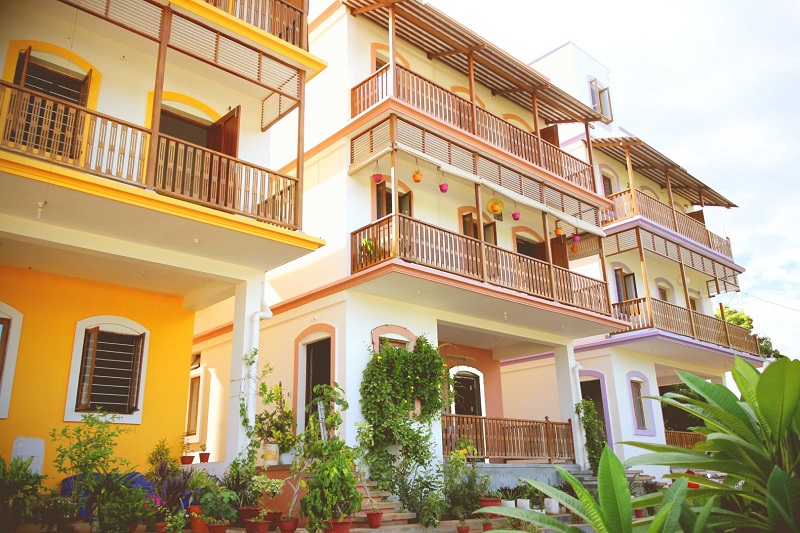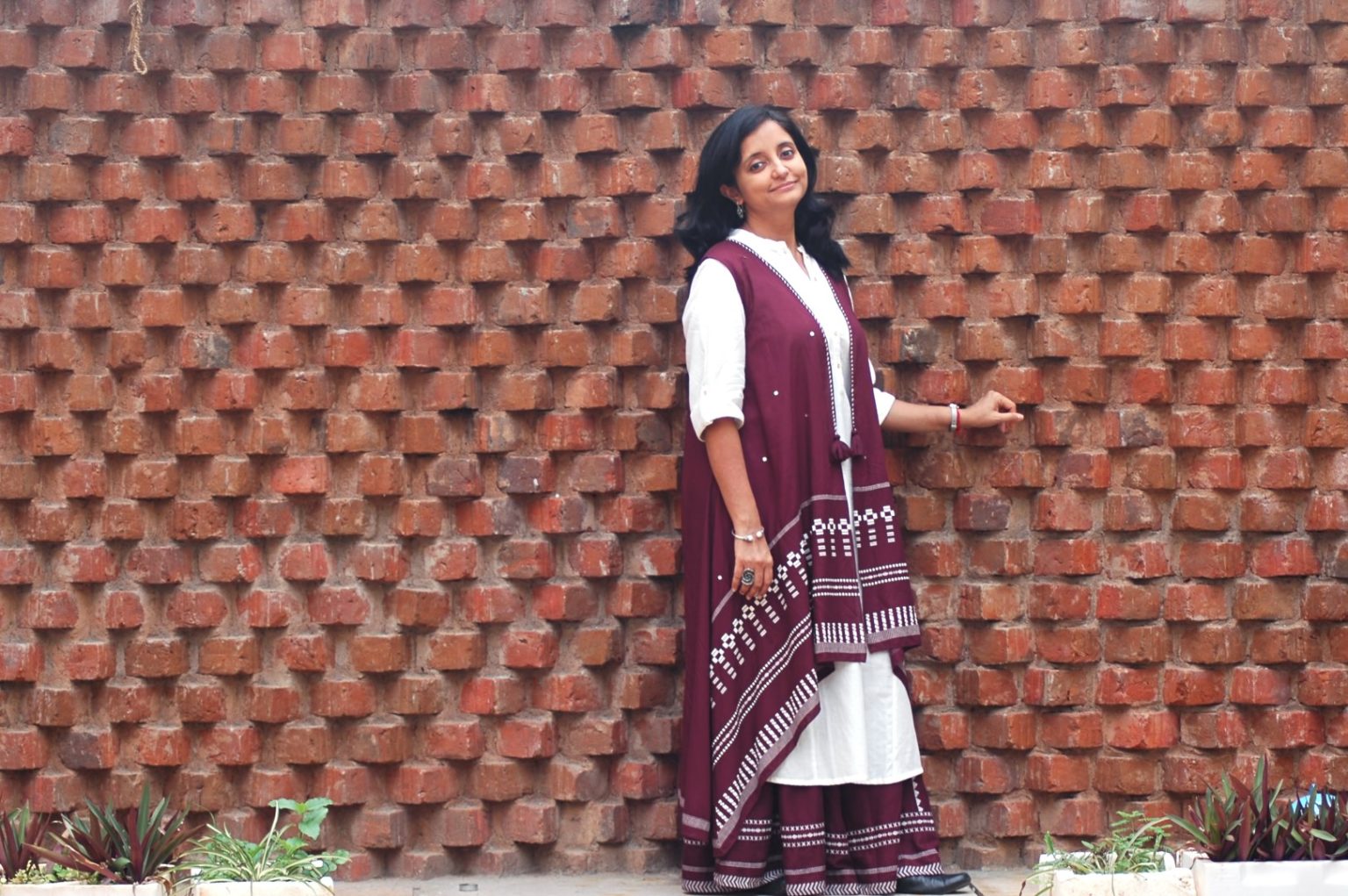Which has been your first project? Where? What was it? How has your experience been?
Sharanam was my first project. It is a cultural Centre which I designed and built in Pondicherry on a 5 acre land. The entire campus is built completely out of the very earth on which it stands.
This project is special because when I started working on the land, it was absolutely barren, like an abused child. The first thing I did was plant indigenous tree saplings – 3000 of them! Within a few years the entire vibration of the land had changed. Today, it feels like a forest! So the experience has been absolutely thrilling, even ecstatic, I should say. The whole process of transforming this land and even the process of building itself was a process of soil healing! We brought very little material from outside, there was no pollution on the building site whatsoever. 90% of the material came from the land itself. Literally the building rose from the ground on which it stood. The water that falls on the roof goes back to the same pit where we dug the soil from.
So here again what I mentioned in the previously “closing the loop” can be visibly experienced! The earth from the rainwater reservoir became the building. The rainwater falling on the building roof comes back to the earth in the reservoir. My experience of building this campus has been absolutely fascinating, quite exemplary. I would hold that up as a benchmark for all future projects.

What type of projects captures your interest or rather interested to do?
Two types of projects. One – projects which embody the vision and the purpose for which it is being built. E.g. At Jagriti Enterprise Centre – Purvanchal, the vision is “Building India through Enterprise.” In the design we have incorporated four distinct elements which embody this vision and bring it into the real experience of the user.
These elements are –
Banyan Tree, the national tree of India,
Lotus flower – the national flower of India,
National flag of India – 100 ft tall
Ghats of Varanasi – quintessiantly Indian response of merging land and water, The campus is a physical embodiment of the Vision of the Founder.
The second type of project is – projects which show measurable impact.
Here, I would cite the example of Gratitude Villa in Auroville. Through various innovations in materials and building technologies, we have reduced 182 tonnes of CO2 emissions in a single villa! You need around 6 mature trees to fix 1 tonne of CO2. So by building Gratitude sustainably, we have saved or grown 1100 trees!!!!
Tell us about your upcoming projects; where and what type?
We have lots of upcoming projects, two of which we are extremely excited about. One is gated communities of luxury villas. We are going to build them across the country. Our first site is Coonoor in the Nilgiri mountains. Here again, we are doing end-to-end sustainability. We’re showing measurable impact without compromising on luxury and integrating it completely with the biodiversity and the landscape of the place.
The second type of projects we are truly excited about are sustainable eco-townships! In these, we are integrating multiuse development including residential, commercial, healthcare & education – all set in nature with biodiversity being the fulcrum. Both these projects are coming up in various locations across the country. We are totally excited about these and can see Auroma architecture ready to create a gigantic impact in the immediate years to come!


